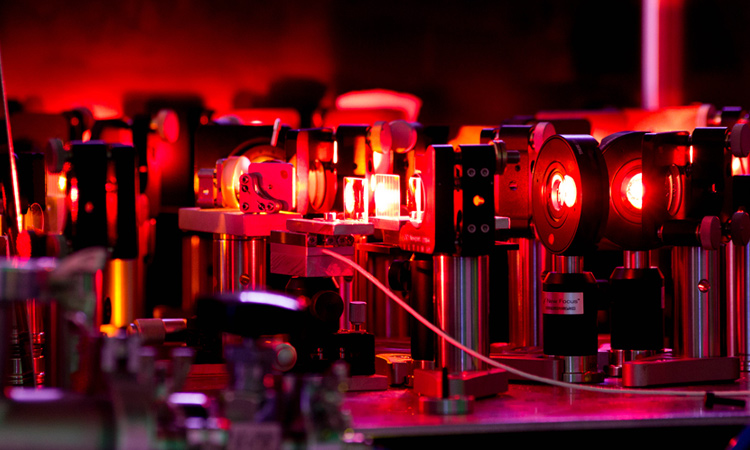Feature
The Birth of Attochemistry
The application of attosecond experimental and theoretical tools to chemistry, and in the future to biology, is opening new avenues of research.
 Front-end of an attosecond beamline: sub-5-fs pulses, characterized by an ultrabroad spectrum, are injected in a high-order harmonic generation chamber. [Maurizio Contran]
Front-end of an attosecond beamline: sub-5-fs pulses, characterized by an ultrabroad spectrum, are injected in a high-order harmonic generation chamber. [Maurizio Contran]
The laws of quantum mechanics dictate the relevant timescales of the microscale processes of chemistry. A single molecule, for example, can rotate and vibrate. Using quantum terminology, we can say that molecular rotations and vibrations relate to the generation of a coherent superposition of rotational and vibrational states—with rotations and vibrations evolving on picosecond and femtosecond timescales, respectively, depending on the energy difference between the states in the coherent superposition.
…Log in or become a member to view the full text of this article.
This article may be available for purchase via the search at Optica Publishing Group.
Optica Members get the full text of Optics & Photonics News, plus a variety of other member benefits.
